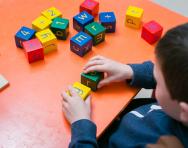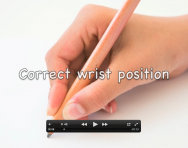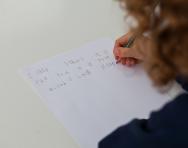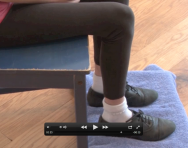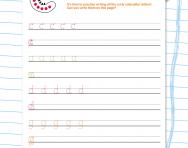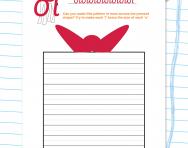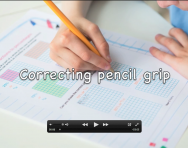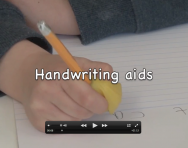All about dysgraphia
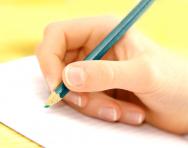
What is dysgraphia?
In its most general sense, dysgraphia is difficulty with handwriting that’s connected to problems with fine motor skills. It does take different forms that need to be understood in order to be treated correctly, and it’s always recommended to consult a specialist if you have any concerns.
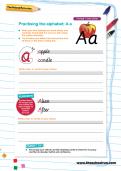
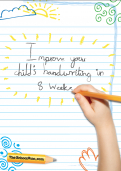
Improve handwriting in 10 minutes a day
- Step-by-step handwriting guide
- Over 200 worksheets
- From patterning to cursive
A child with dysgraphia won’t necessarily be dyslexic or dyspraxic (though the conditions are often linked). For example, dysgraphia won’t necessarily affect oral spelling; so, a child could be an excellent oral speller, but be very poor when it comes to writing words out on paper. Because this may indicate that the condition isn’t dyslexic, it can be treated differently.
How to recognise dysgraphia
Children with dysgraphia may have excellent reading and listening skills, but they have trouble with handwritten homework. It could take a long time to do, or they may just not want to do it because of the frustrations writing causes them.
Watch for these signs:
- Difficulty holding a pen
- Forming letters that are different sizes, with irregular spacing , and not always staying on the line
- Illegible handwriting (something that you really can’t read at all – most children may not write neatly but it can still be read, whereas not being able to read what they’ve written at all could indicate a problem)
- Mixing upper and lower case letters
- Holding a pen/pencil very tightly
- Problems with spelling
- Lack of motivation with writing
What I can do to help my child?
National Handwriting Association committee member Catherine Elsey is a paediatric occupational therapist, and recommends that parents start with basic body positioning when it comes to assessing their child’s handwriting practices before looking at letter formation.
- “Look at the biomechanics first,” she says. “Find out if your child is ready ergonomically and posturally to begin writing.” Is your child comfortable where they’re sitting? Are the table and chair height right for them? Are their feet flat on the floor?
- “Ask children if they get any pain or discomfort when writing, and to show you where,” says Catherine. This will tell you which part of their arm that they’re using to write. Children with dysgraphia will likely be using most of their arm to write, and could have aches and pains in their shoulder, arm and/or wrist. “The most common problem I see is wrist positioning,” Catherine explains. “Most parents just look at the thumb and finger position.” Check to see if your child’s wrist is relaxed as they write and moving smoothly across the page as they do, or if it jumps along while they try to stretch their fingers to reach further along a line. “You need to go back and look at where the problem starts,” says Catherine.
- When you set out paper for your child to write on, make sure it’s angled correctly, on the right or left side of the body (depending on which hand your child writes with), and not positioned flat and straight. “Right-handed writing naturally goes in an uphill movement,” explains Catherine, “and left-handed writing moves downhill. Children will end up twisting their body to compensate.”
- You can work on strengthening hand and finger muscles with toys you probably already have. For instance, playing with clay and Lego will help reinforce what children need to write. “You can use any toy that requires resistance, and has a bit of push and pull,” says Catherine. Encourage your children to think about what they’re doing with their hands as they play.
- If you think your child may have dysgraphia, you may find help at school. “Check what they have to help kids with handwriting difficulties,” Catherine says. They may have a handwriting group, for instance, or be able to recommend computer programmes you can try at home.”
If you are concerned that your child has dysgraphia, speak to your child’s teacher, and read the National Handwriting Association’s advice for parents and information on where you can find dysgraphia support.
You can also read more information about how your child learns to write and plan some at-home handwriting practice with our advice for parents and selection of handwriting and patterning worksheets.

Give your child a headstart
- FREE articles & expert information
- FREE resources & activities
- FREE homework help
